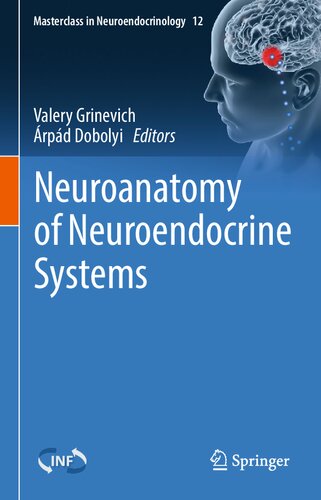

Most ebook files are in PDF format, so you can easily read them using various software such as Foxit Reader or directly on the Google Chrome browser.
Some ebook files are released by publishers in other formats such as .awz, .mobi, .epub, .fb2, etc. You may need to install specific software to read these formats on mobile/PC, such as Calibre.
Please read the tutorial at this link: https://ebookbell.com/faq
We offer FREE conversion to the popular formats you request; however, this may take some time. Therefore, right after payment, please email us, and we will try to provide the service as quickly as possible.
For some exceptional file formats or broken links (if any), please refrain from opening any disputes. Instead, email us first, and we will try to assist within a maximum of 6 hours.
EbookBell Team

4.0
66 reviewsIn this book, experts in the field provide comprehensive descriptions of the neuroanatomy of the hypothalamic neuroendocrine systems.
The book begins with an extensive discussion on the structural components of the neuroendocrine systems. The reader will be introduced to the anatomy and biology of the hypothalamus and the pituitary. The human hypothalamus is presented in particular detail using state-of-the-art imaging techniques. In the next section, the neuroanatomy of traditional hypothalamo-hypophyseal systems is highlighted, with chapters describing magnocellular neuroendocrine cells and discussing the respective types of hypothalamic neurons that regulate various pituitary hormones. Following this detailed structural and anatomical description of the neuroendocrine system, the book’s final section focuses on the hypothalamic control of neuroendocrine functions. This includes the control of circadian rhythm, metabolism and appetite via specific peptidergic circuits.
This book provides essential information on the neuroanatomy and control of neuroendocrine systems, addresses cutting-edge research questions posed by recent advances in the development of potent neuroanatomical tools, and highlights the latest technologies used in neuroendocrinology research, making it a valuable reference guide for students, trainees and established researchers alike.
This is the twelfth volume in the International Neuroendocrine Federation (INF) Masterclass in Neuroendocrinology series, which aims to illustrate the highest standards and to encourage the use of the latest technologies in basic and clinical research and hopes to provide inspiration for further exploration into the exciting field of neuroendocrinology.